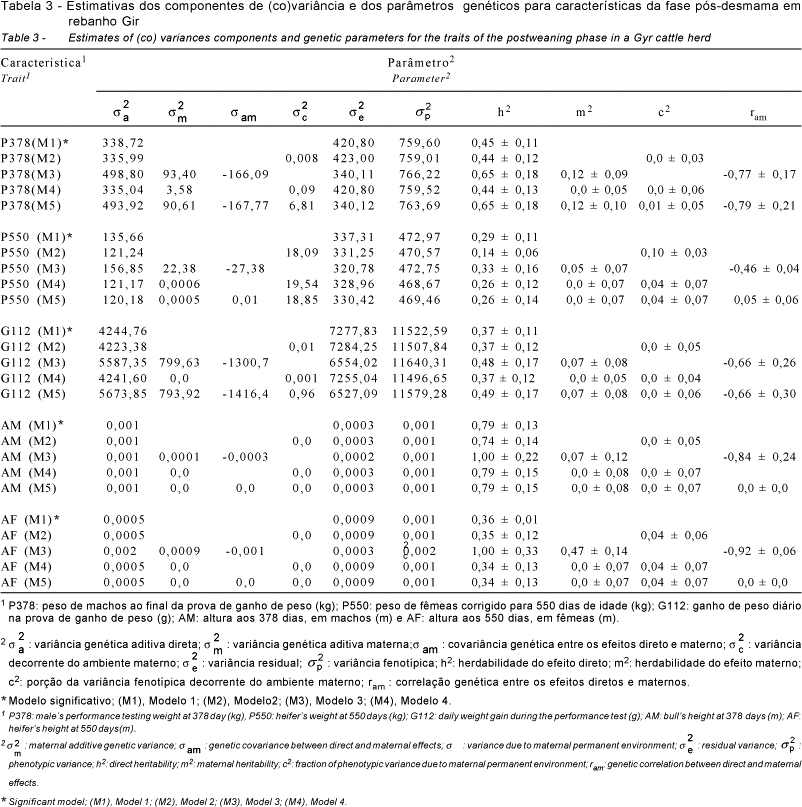Variance components and genetic parameters for growth traits of Gyr breed were estimated using univariate analyses by restricted maximum likelihood. Five models differing in the random effects were evaluated. The models included the fixed effects of month of birth, contemporary group and age of cow. According to the likelihood ratio test (LRT) the best fit for all traits measured in the pre-weaning period was obtained by the model including the direct and maternal effects (genetic and environment). Heritability estimates for birth weight (PN), weight adjusted to 120 days (P120), weaning weight adjusted to 210 days (P210) and daily weight gain in pre-weaning period (P210) were respectively, 0.31 ± 0.07, 0.14 ± 0.06, 0.23 ± 0.07, and 0.22 ± 0.07. For the post-weaning traits, the best fitting model was the one which included only the direct genetic effect. Heritability estimates for male performance test weight at 378 days (P378), heifer weight at 550 days (P550), daily weight gain during the performance test (G112), male height at 378 days (AM) and heifer's height at 550 days (AF) were respectively, 0.45 ± 0.11, 0.29 ± 0.11, 0.37 ± 0.11, 0.79 ± 0,13, and 0.36 ± 0.0. The maternal genetic and permanent environmental effects were important sources of variation only for the traits measured in the pre-weaning period.
animal model; beef cattle; daily gain; heritability; likelihood ratio test; performance testing





